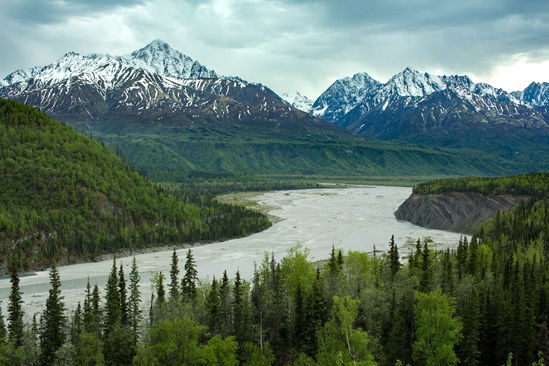Understanding density altitude
Go beyond the textbook definition
With Embry-Riddle Aeronautical University, helicopter training provider Guidance Aviation, the North-Aire flight school, and other training providers, Ernest A. Love Field in Prescott, Arizona, is a hotbed of training activity. How do flight schools at the high-desert airport—elevation 5,044 feet—teach their students about density altitude?
Pilots will have a chance to experience the Prescott area Sept. 30 and Oct. 1, when AOPA holds its fourth and final 2016 Fly-In at the airport. And Prescott is a great jumping-off point to other Arizona attractions. From Love Field, storied Sedona, Arizona, is only 33 nautical miles east-northeast, and the Grand Canyon is 79 nm north. (Most of Grand Canyon National Park lies below Special Flight Rules Area 50-2, which restricts flights below 18,000 feet msl; consult the Grand Canyon VFR Aeronautical Chart to plan an aerial tour.)
“Our students don’t know any different” when it comes to the density altitude conditions that Prescott can experience, said Jerry Kidrick, chairman of Embry-Riddle’s flight department there since 2008. For most, it’s the only place they’ve flown. “And they’re going to encounter these conditions in the real world,” he added. The university’s flight team actually has to seek out lower altitudes for some of its practice sessions, he said, so members can be competitive at the lower-elevation airports where most competitions take place.
Training is available for pilots unaccustomed to higher density altitudes. Lori MacNichol is the president and owner of McCall Mountain Canyon Flying Seminars LLC, located at McCall Municipal Airport in McCall, Idaho, which offers two- and four-day seminars in backcountry flying, as well as individual instruction. The airport elevation is 5,024 feet and many of Idaho’s backcountry airports are even higher, so density altitude comprises a large part of the curriculum.
She teaches rules of thumb to help pilots quickly assess conditions. For example, to determine density altitude at a given pressure altitude, add 600 feet to the existing pressure altitude for every 10 degrees Fahrenheit above standard temperature for that altitude. (At her 5,000-foot airport, standard temperature is 41.5 degrees Fahrenheit.)
Most of her first-time customers’ knowledge of density altitude is pretty weak, she said. “They understand performance charts—they get that. And they understand how the ground roll increases. But what they really don’t understand is how thin the air can become, and how reduced their horsepower can become.”
As altitude increases, the air’s density decreases. Temperatures higher than standard also decrease air density. The thin air at high density altitudes reduces lift, because it exerts less force on your wings; reduces engine power, because there’s less air to mix with the fuel; and reduces thrust, because the propeller is less efficient in thin air. Combined, these result in longer takeoff and landing rolls, decreased climb performance, and a reduction—often significant—in engine performance.
Regardless of the actual altitude at which an aircraft is flying, it will perform as though it is operating at the existing density altitude—which can be thousands of feet higher than the altitude indicated on the altimeter. (Air density also is affected by humidity, but humidity’s effect on density altitude is much less dramatic than temperature’s.)
For example, on a runway at 5,000 feet elevation, the density altitude easily can be 7,000 feet, and pilots will notice that the takeoff roll is longer. “Power loading and horsepower available—and the change in horsepower with density altitude, and how it steals your performance values—is what really cocks pilot’s heads,” MacNichol said. “When we look at how your engine is robbed—when it’s 230 horsepower at sea level and you take it to 7,000 feet [density altitude], and realize that it’s just 180 horses, they go, ‘Wow. I’m not going to be able to put four people and gas in there.’ And it will have less power for the climb.”
Another rule of thumb: A normally aspirated aircraft engine will lose approximately 3.5 percent of its horsepower for every 1,000-foot increase in density altitude. So at a density altitude of 7,000 feet, 25 percent of engine power has vanished.
To look at density altitude’s performance-robbing ability in a different way, calculate the amount of excess horsepower available for climbing. Take a 200-horsepower Cessna Cardinal RG, calculated at sea level to require 122 horsepower to maintain level flight at VY—meaning there are 78 excess horses available for climb. At a density altitude of 8,400 feet, that excess horsepower has fallen to 18. “If you can accept a 108-feet-per-minute rate of climb, more power to you. But if you get into a downdraft or a little turbulence, you can be settling and clawing for altitude.”
She believes most pilots understand the leaning procedures recommended for takeoffs in high density altitude conditions—if they remember to lean. “These days, with all the digital [engine] information we’re getting, people can do a pretty good job leaning.” But proper airspeed isn’t stressed enough, MacNichol said. “Indicated airspeed is indicated airspeed. We fly indicated airspeed no matter what our density altitude is. That’s not emphasized enough.” Yes, in the thin air, groundspeed will be higher. “That doesn’t mean you need to fly slower,” she said.
MacNichol cautions against what she calls the density altitude brain fade takeoff. “You don’t necessarily have to be in the mountains. The key is to know your ground rolls. What’s important is you have to have some parameters pre-decided for takeoff. It’s almost like a safety briefing. At a backcountry airport we’re going to have a target spot for liftoff—maybe a bush beside the runway, before the halfway point. If I don’t lift off, or don’t have 70 percent of my rotate speed at that bush, I’m going to have to abort my takeoff and figure out what’s wrong—instead of pressing on. A lot of pilots don’t think about that."
How can a pilot train for density altitude conditions if he or she flies from a low-elevation airport? “Pilots can get density altitude experience, even at sea level. A lot of good instructors can do partial power application. You’re not going to pull 23 inches [of manifold pressure on takeoff] in McCall, you’re going to pull 19. So let’s do some takeoffs using only 19 inches of power. It’s pretty realistic, but it’s not a perfect solution,” said MacNichol.
In the high-elevation, mountainous area where she has been flying since the early 1980s, MacNichol said density altitude doesn’t receive enough respect from pilots. “When I look at all the NTSB reports annually for this region, pretty much all those accidents and incidents circle back to a density altitude issue.” She shares additional thoughts on the topic in “Into Thin Air” (August 2016 Flight Training).




